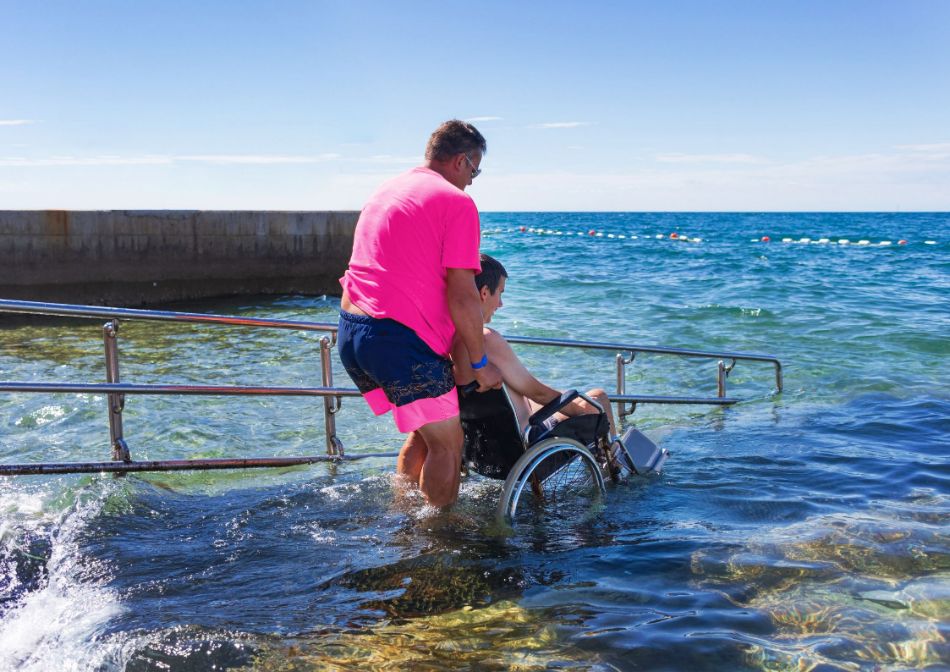The Importance of Accessible Infrastructure and Technologies for Persons with Disabilities
“One person can make a difference, and everyone should try.”
(John F. Kennedy)
On December 3rd, the world celebrates the International Day of Persons with Disabilities, highlighting the importance of inclusivity and the need for accessible infrastructure and technologies. With over 1 billion people worldwide living with disabilities, ensuring equal access to public spaces, transportation, and digital environments is not just a legal requirement but a moral and societal obligation. Accessible infrastructure is a foundation for independence, social inclusion, and economic participation, empowering individuals with disabilities to fully engage in daily activities without barriers.
Accessible Infrastructure: Bridging the Gaps
The Role of Technology in Accessibility
Transportation Accessibility: A Key to Independence
Ensuring Digital Accessibility
The Global Push for Inclusion
Moving Forward: Practical Steps for Accessible Futures
A World Striving for Accessibility

Accessible Infrastructure: Bridging the Gaps
Accessible infrastructure encompasses physical environments that accommodate people with diverse abilities, such as wheelchair users, individuals with low vision, and others with mobility challenges. Many societies have recognised the growing need to implement universal design principles, creating public spaces and transportation systems that cater to people with vision impairments, mobility issues, and diverse needs.
One area where this is particularly critical is in public transport systems. Accessible transportation systems, such as train stations equipped with elevators, priority seating, and wheelchair spaces, ensure that everyone can navigate urban environments easily. Unfortunately, in many countries, transport infrastructure has not caught up to modern accessibility standards. The World Health Organisation has identified that existing infrastructure in many regions lacks essential accessibility features, preventing people with disabilities from fully engaging in society. Improvements in transport accessibility can have a positive impact on the lives of people with disabilities by reducing dependence on others for daily mobility.

The Role of Technology in Accessibility
Technology plays a crucial role in creating an accessible world. From assistive technology to screen readers, digital advancements help remove barriers that people with disabilities face. For example, web content accessibility guidelines (WCAG) outline the standards for making digital content usable by individuals with disabilities, such as people with low vision or those requiring alternative input methods.
Artificial intelligence (AI) is another technology that holds promise for enhancing accessibility. AI-driven solutions, like voice-activated devices and virtual assistants, can help individuals with vision impairments or mobility challenges navigate their daily lives more independently. These technology solutions cater not just to people with disabilities but also to elderly people, ensuring that a wide range of diverse abilities are considered in the design of new technologies.
Incorporating big data into accessibility planning can also improve infrastructure design and service delivery. By analysing user behaviour and needs, policymakers can better understand how to design spaces and technologies that truly cater to people with disabilities. Technology plays a pivotal role in bridging the gap between accessible and non-accessible environments, allowing for continuous improvement and the implementation of universal design standards.

Transportation Accessibility: A Key to Independence
Access to transportation is one of the most significant barriers people with disabilities face. Without accessible public transportation, individuals may be unable to attend work, access healthcare, or engage in social activities. Public transport systems should integrate barrier-free access, ensuring that buses, trains, and other forms of transport are equipped with ramps, elevators, and designated seating.
Improving transport infrastructure for people with disabilities involves not only modifying physical spaces but also raising disability awareness among government officials and policy makers. Governments must prioritise funding for accessible transportation systems, ensuring that people with disabilities have equal access to public infrastructure. The NSW Government in Australia, for example, has recently increased funding for transport accessibility projects, ensuring that wheelchair users and others with mobility challenges can navigate cities more easily.

Ensuring Digital Accessibility
The digital world presents its own set of challenges for people with disabilities. Many websites and online services are still not designed with accessibility in mind, leaving users with vision impairments, motor disabilities, or cognitive challenges at a disadvantage. Following the web content accessibility guidelines (WCAG) is a practical step toward making digital platforms usable for everyone. Features like screen readers, closed captions for videos, and keyboard navigation options enable users to engage with content regardless of their abilities.
Companies and service providers must also ensure that digital technologies align with universal design principles. When technology solutions are inclusive, they not only benefit people with disabilities but also elderly people and individuals facing temporary impairments. By creating platforms that meet accessibility requirements, businesses can tap into a wider customer base and improve the well-being of people with disabilities.

The Global Push for Inclusion
In recent years, there has been a growing recognition of the importance of inclusive design. From the United Nations’ Convention on the Rights of Persons with Disabilities (CRPD) to national laws like the Americans with Disabilities Act (ADA), governments are increasingly being held accountable for ensuring accessibility in public and private spaces.
However, achieving universal access often involves competing priorities, such as budget constraints and political agendas. As a result, there is still much work to be done to ensure that accessibility features are integrated into urban development plans and digital landscapes. Policy makers and government officials must prioritise the inclusion of accessibility features in all infrastructure projects, ensuring that individuals with disabilities are not left behind as societies grow and evolve.

Moving Forward: Practical Steps for Accessible Futures
Creating an accessible world for people with disabilities requires collaboration between governments, businesses, and civil society. There are several practical steps that can be taken to improve accessibility across various domains:
Upgrade Existing Infrastructure:
Retrofitting older buildings and transport systems with accessibility features, such as ramps, tactile paving, and priority seating, can make a significant difference.
Implement Universal Design:
Applying universal design principles to new developments ensures that public spaces, transport, and digital platforms are built with accessibility in mind from the outset.
Invest in Technology Solutions:
Governments and businesses should invest in assistive technologies and artificial intelligence solutions to enhance access to both physical and digital environments.
Raise Disability Awareness:
Encouraging disability awareness and educating the public about the benefits of accessible design can lead to greater acceptance and support for accessibility projects.
Provide Feedback Channels:
Engaging people with disabilities and allowing them to provide feedback on infrastructure and technology developments will help create environments that meet their needs.

A World Striving for Accessibility
As the world strives to create more inclusive societies, it is crucial to prioritise accessibility in all areas of development. Whether through accessible infrastructure or digital technologies, ensuring that people with disabilities can fully participate in society is essential for creating a world where everyone can thrive. Accessible public transportation, web content accessibility guidelines, and the integration of universal design principles are just a few of the tools that can help break down barriers and promote inclusion for all.
By taking deliberate steps toward accessibility, we can create a world that not only meets the needs of people with disabilities but also benefits the wider population, including elderly people and those with temporary impairments. This International Day of Persons with Disabilities, let’s commit to creating a future where no one is left behind.

At Nurse Next Door, we are passionate about Making Lives Better®.
If your are looking at Caregiving as a Career click here to learn more and see what opporunitites are available in your local area.
If you require care in your own home, on your own terms, contact us 24/7 on 1300 600 247 to discuss how Nurse Next Door can help you keep doing what you love.
